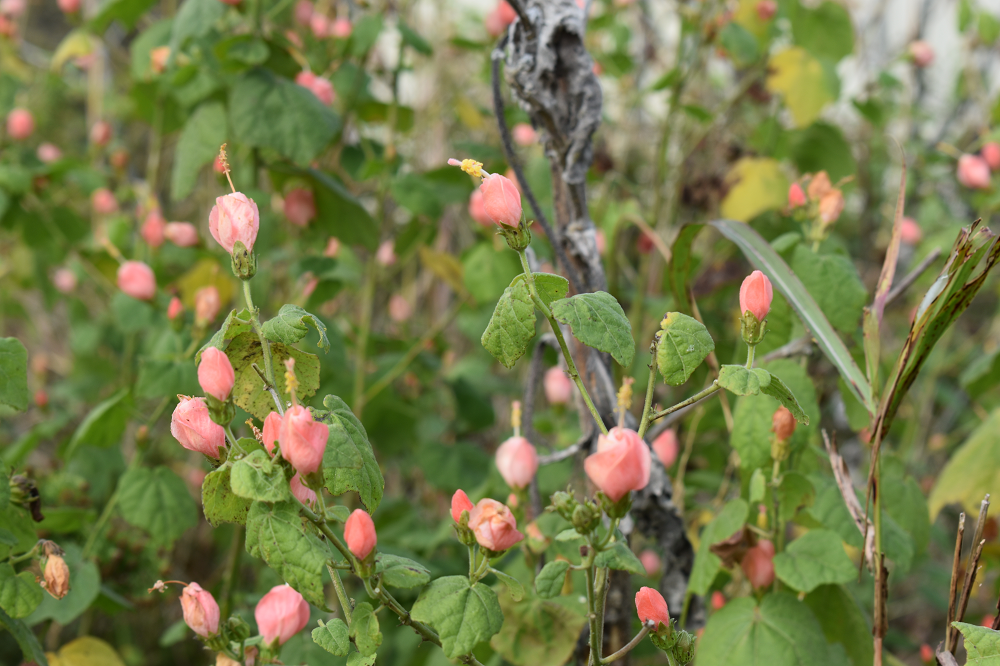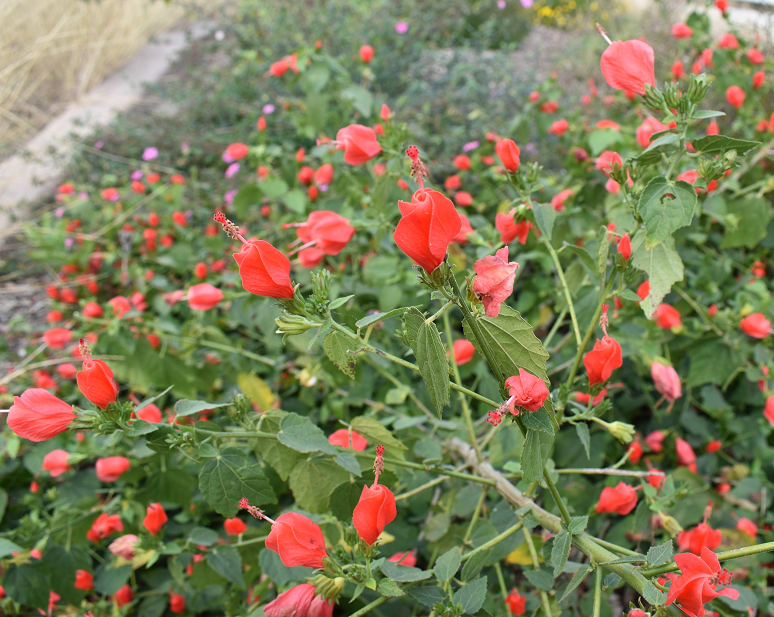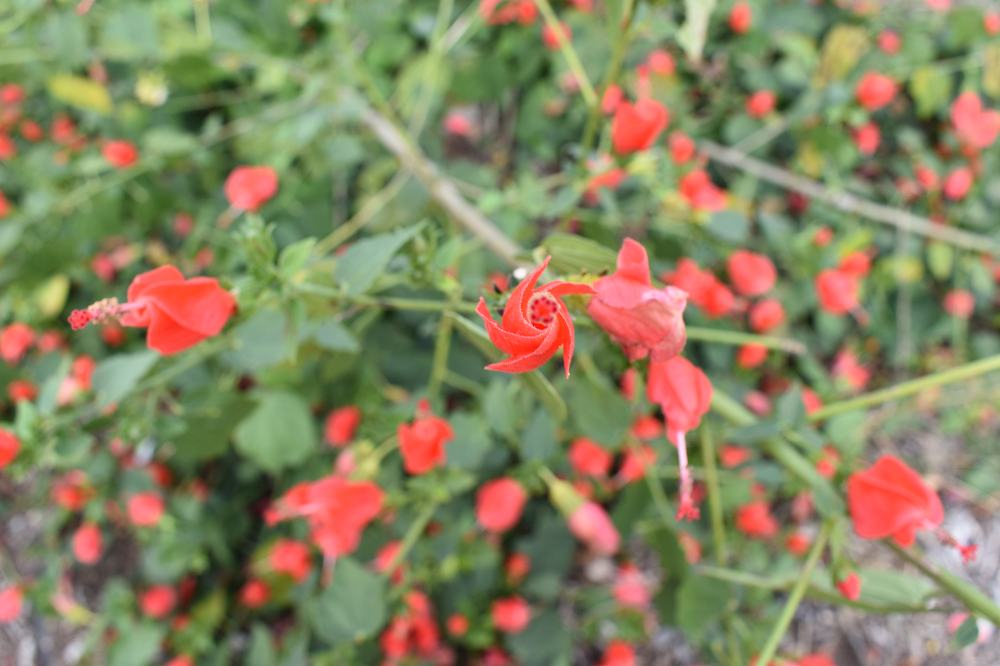In this ‘Weekly Native’ series, I’ll showcase a species of plant that is seasonally active in North Texas. This week’s native is Turk’s Cap, also known taxonomically as Malvaviscus arboreus.
This Texas annual hails from Central and South America and has made its way into Texas. Generally a resident of the Gulf Coast, somehow it managed to find purchase in one county in North Texas. Most likely because someone who loved it down south decided to include it in their garden here or gifted a cutting to their northern friend.
It’s a very happy plant, no matter where it ends up in it’s growing regions. It enjoys full sunlight to partial shade and subsists in silty prairie soils to rich, loamy forest floors. Host to several species of butterflies, bees, and hummingbirds, it’s a great addition to vegetable gardens and orchards that require pollination to fruit. It’s pest resistant as well, able to propagate beyond the damage done by white flies which don’t usually make their way to the plant unless it’s domesticated.

It’s very showy and in landscaping projects. The flower color ranges from red to white, with newer hybrid species showing off light pink flashes. Flowers present mostly closed with a stamen rising through and above the small blooms – about one inch in size. Turk’s cap is drought-resistant, but not cold tolerant. That’s not a problem in the zones you’ll find it living. Freezes aren’t persistent in many of them. However, it is an annual, so longer-term cool temperatures will cause its leaves to yellow and for it to die back. Wait for it to grow back in spring, though.
It’s a Texas Superstar according to Texas A&M Agrilife. The criteria for a Texas Superstar are as follows:
- must be attractive and useful to the gardening public
- must be unique and offer desirable and ornamental characteristics (i.e., the ability to perform in the heat of Texas summers or pest resistance) not usually available in commonly sold plants
- must consistently perform well for most Texas consumers regardless of their gardening expertise and growing locations
- must be as pest resistant as possible (deer proof is an added bonus)
- must be able to be propagate and mass-produce in sufficient numbers to meet consumer demand; and
- preferably is so attractive in the sales container that it “sells itself” to consumers – who have never heard of the attributes of the plant
Based on these, it’s easy to see how Turk’s Cap is a great plant to begin a gardening journey. Maybe one of your friends is growing it? To propagate the plant, root clippings in water with rooting powder. Then plant in soil.
Most of the plant – save the roots – can be eaten. Small fruit grow after the plant flowers, and studies have shown the fruit can reverse liver damage in lab rats. Foragers purport the plant is a great source of antioxidants, protein, starch, and vitamin C. So, if you find yourself starving in a field of Turk’s Cap, take a few! But use proper preparation methods to break down hard-to-digest enzymes first and ensure the plant has not been treated with toxic pesticides which can poison anything over time. The leaves, for instance are less difficult to digest if they’ve been wilted a bit. The flowers can be eaten raw and taste like honey suckle. Mineral and nutrient concentrations have powerful medicinal benefits as well, making Turk’s cap a wonderful treatment for colds, fever, wounds, and hypertension. That’s just a few of the medicinal uses for this plant. In fact, the medicinal use of Turk’s Cap has been employed to this day in Mayan culture. Current studies show it could be very promising if used in the pharmaceutical industry.
So, if you’re new to gardening, or you just want to grow something that doesn’t require much effort on your part, Turk’s Cap is your plant. Wait until Spring, and try it out, why don’t you?

References:
https://www.foragingtexas.com/2008/08/turks-cap.html
http://admin.ipps.org/uploads/16B-Grant-Greg-Texas-Superstar.pdf
Patrock, Rich, Shelley Maher, and John Reilley. “A comparison of flower visitors to Texas native and exotic ornamentals.”
Abdelhafez, Omnia Hesham, et al. “Hepatoprotective potential of Malvaviscus arboreus against carbon tetrachloride-induced liver injury in rats.” Plos one 13.8 (2018): e0202362.
Rodríguez-García, Cecilia Mónica, et al. “Antioxidant, antihypertensive, anti-hyperglycemic, and antimicrobial activity of aqueous extracts from twelve native plants of the Yucatan coast.” PloS one 14.3 (2019): e0213493.

Recent Comments